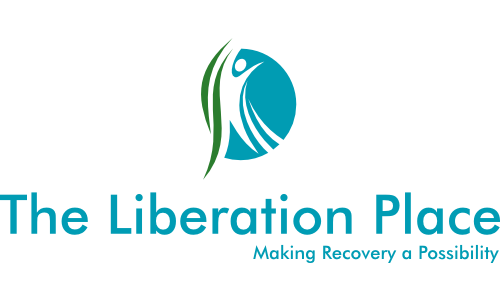The Coping Modes
Each and every one of us uses coping mechanisms at different points in our lives. Some people use way more than others, but we wouldn’t be acting as people if we didn’t use them at all. They are a necessary part of the human experience, and they’re also the primary way we learn to process, distract from, or avoid our difficult, and uncomfortable, emotional experiences. There are those of us that developed many different effective and adaptive ways to work through these challenging times, and then there are those of us that did not. This is down to our own individually unique childhood experiences. Regardless of what we may come to know as adults, we develop our primary coping mechanisms throughout our formative years. When we experience an emotion, usually one that can eventually get attached to the creation of some kind of schema, we try a lot of different things to help us cope. When the thing we try is effective in achieving what we want to achieve in the current moment, we use it again the next time we feel the same way. The more it works, the more we use it, until it becomes the go to behaviour whenever these feelings come up for us in the future.
“Coping mechanisms are the primary way we learn to process, distract from, or avoid our difficult, and uncomfortable, emotional experiences.”
~Steven Morris RP
The type of coping mechanisms we internalize is often, but definitely not always, down to the way things get modelled for us by the influential people we are exposed to. Parents, siblings, extended family members, along with any of the significant care givers we spend a substantial amount of time with are continuously being observed by our curious and impressionable minds. We are watching to see how things are done, what they do when circumstances go a certain way, and we’re listening to hear what to say in emotionally activating situations. If we see these people coping with their feelings in healthy and adaptive ways, we try and recreate these behaviours ourselves when we have our own challenging emotional experiences. If we observe people behaving in ways that are reactive, ineffective, and probably maladaptive in some way, we attempt these responses ourselves when faced with similar circumstances.
Our coping mechanisms are also defined by the things we are told when we express our emotional experiences when we’re young. If we display an emotion in a specific way, what we get back in response plays a significant role in how we express this emotion in the future. For example, if I am sad, my body language and behaviour patterns have a natural way of expressing this in the environment. If I feel like I’m supported and validated in the experience of these feelings by the people around me, I learn to process them by talking, and I also feel safe to do so moving forward. On the other hand, if I’m told things like, “What do you have to be sad about, there are people way worse off than you, you need to suck it up buttercup,” then my emotional experience is invalidated, and I can develop the belief that my emotions are wrong, so I will cope with them in this maladaptive way the next time they come up.
"If we observe people behaving in ways that are reactive, ineffective, and probably maladaptive in some way, we attempt these responses ourselves when faced with similar circumstances."
~Steven Morris RP.
Our coping mechanisms become the Modes of Behaviour, being used by the different parts of our personality, in response to an emotional experience, as we move forward into adult life. Many people think they’re only reacting to the situation they find themselves in, when in actuality, we aren’t reacting to the situation, we are reacting to the emotion that’s been activated by our story about the situation. This is an important distinction to make, as the emotion we’re experiencing isn’t always tied to what’s actually going on. It’s often the case that an activated schema has us seeing the situation from a distorted point of view. When we use the skills of Dialectical Behaviour Therapy, things like STOP and Check the Facts, we can learn to manage the parts that want to react. When we integrate the primary version of the RAAVEN exercise into this process, we can educate these parts on what is so, and Plan Ahead to Build Mastery for the next time these emotions get activated in our personality system.
Before we can do all of this, we have to learn how to identify and then manage these parts, along with their Modes of Behaviour, when their presence has been triggered within our personality system. This takes time and effort. We have to identify the red flags of distress that get activated by the beliefs they bring to our minds. We have to slow things down so we can listen to the language they use to communicate their unique point of view. Journalling is a fantastic way to achieve this goal, but not journalling in any old way. Documenting our thoughts, feelings and physical sensations in a way that can be linked to a mode, and eventually a schema, to assist us in changing the rigid belief this part has that there’s a behavioural response which is not only necessary, but it’s simply the only option. When this is the case, it’s usually not a fact, just an ineffective point of view that keeps us trapped in old behaviours and stuck in old beliefs.
Mode Journalling is a fantastic way to open our minds to the parts of our personality we are trying to work with, right now. I’ve included an example of what this looks like, from a textbook perspective, in the PDF at the bottom of this page. Remember, when documenting the thoughts of your parts, get REALLY specific with their language. This is the only way we can truly identify a part that’s behaving in a particular mode, so don’t edit these thoughts in any way, document them literally. Take some time to explore what Mode Journalling might look like for you, and how you can use it in your journey. Try building it into your daily routine, and once you have an idea for the language, feelings and physical sensations that are connected with your parts, see if you can identify the Mode of Behaviour they’re in by going through the following list of the common Behaviour Modes we can identify in our system.
Parts that give in to the internal or external narrative that’s currently being pushed on our personality system.
The parts of our personality that disconnect from the emotional experience that’s present in our system.
The Detached Self Soother Mode
The parts of our personality that detach from the emotional experience we are struggling with using substance or process to escape.
The Perfectionistic Overcompensator Mode
The parts of our personality that push for perfection in the areas of life that there is a schema that’s activated this point of view.
The parts of our personality that physically stay away from situations that are seen as difficult, challenging, or uncomfortable for us to be in.
The parts of our personality that use aggressive and confrontational behaviours to push people away when our system is overwhelmed.
The parts of our personality that overexaggerate our ability to do things, or puts our way of being on a pedestal over others.
The parts of our personality that use words and actions in a deliberate fashion that’s designed to hurt the person that’s the object of our fury.
The parts of our personality that try to attract attention by being the loudest person in the room, or by sitting in an unjustified victim mentality.
Download the PDF of this page
Return to the Introduction to Modes page
Follow us on Social Media





